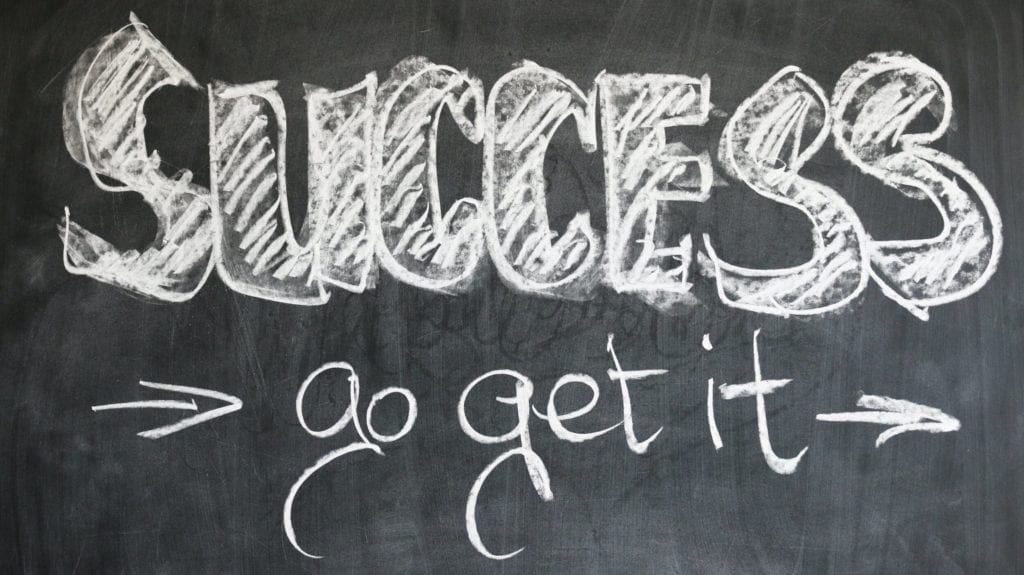
BOOST YOUR MOTIVATION BY SETTING “SUCCESS MINIMUMS”
When Jon did intervals, the workout might be 10 x 400m at 56 seconds. But the minimum coach wanted Jon to get done might be 6. If Jon could get to 6 x 400m at the goal pace, the workout was a success. If he had to stop there, he could stop. And if he kept going and got up to 10, the workout was a big success.
He used the same strategy with me for my tempo runs. We would aim to do 7 miles at 5:00/mile pace, but the minimum I had to do was 5 miles. Anything after that point was considered a bonus. There were days where we called it quits at 5 miles. And there were other days I went the full 7 miles. Each were considered successful workouts.
Jon and I both found this strategy to be incredibly beneficial to our training. It’s actually a great way to approach any challenge where you don’t need to be perfect to get the results you are looking for. You can hear Jon and I discuss this at the 19:00 mark (scroll there in the player below).
DEFINING SUCCESS AS A RANGE OF OUTCOMES
It’s easy to get caught up in the idea that we need to do the most we can. There’s certainly a time and a place for that. But it’s not always and everywhere.
The reality is we rarely need to max out, or be perfect, to get positive results. Especially when what we are working on is a long-term goal that requires consistency and time to achieve it. This is true for running but it’s equally true for other sports, school, building a successful business, and raising your children.
What we often need to do is make progress. And progress can be anywhere from good enough to perfect. As we talked about in our previous episode, it’s really important to know when “good enough” is good enough. When our extra work doesn’t make much difference, we need to recognize that and put our efforts into more important activities. This is the key lesson of the 80/20 rule.
But here’s an even better reason to think about success as a range of possible outcomes. It actually boosts your motivation and leads to better work!
WHY MINIMUMS BOOST MOTIVATION
Most of us are more fearful of a bad outcome than hopeful about a good outcome. The technical term for this is loss aversion and we weigh it much more heavily than we do the potential gains of success.
When you define success as a maximum, you set up a very real possibility that you won’t reach it. And this creates the fear of underperforming, of looking bad, of making a mistake. These negative feelings tend to outweigh the benefits we feel from pursuing the outcome in the first place.
Put more bluntly: when there’s only one possible definition of success and you don’t hit it, it feels terrible.
Setting minimums completely changes the way our minds work. It removes much of the fear and risk of failure while also building in more opportunities for success. Jon outlined three reasons on our podcast:
REASON #1: YOU ARE MOTIVATED AND CONFIDENT ABOUT ACHIEVING THE MINIMUM
It’s much easier to start a workout, your classes, your projects, or just your day with a minimum you aim to achieve. If that minimum is both achievable and positive—this is important, setting a minimum that isn’t enough to be positive won’t have the same effect—then you will be more motivated to pursue it.
If you are a runner, it’s the sixth of ten 400m repeats, or the 5th mile of the 7 mile tempo run. If you are a student, it’s a minimum amount of study. If you are starting a project, it can be a minimum amount of progress.
A real-world business example: When I worked on large reports to track iPhone launches, we would define a minimum and maximum by determining which metrics were “critical must-haves” and which were “ideal but not necessary.” We would build in the critical first, and then aim to add whatever else we could. Starting with the critical minimum allowed us to feel confident that we could deliver it, while knowing that there was opportunity and desire to do more.
REASON #2: YOU ARE SUCCESSFUL AS SOON AS YOU HIT THE MINIMUM
The moment you hit that minimum you are officially successful. We all want to feel successful. The more often we feel successful, the more motivated we get to keep doing what we are doing.
Real world example cont’d: Once we had the core reports built, we knew we had enough to go live. We knew we had done what was necessary for the business. And that is a great feeling, because we not only shed any fear of failure, we immediately created an opportunity for even greater success. The more we could build in before the report went live, the more successful we would be.
REASON #3: WHEN YOU HIT THE MAXIMUM YOU ARE ON TOP OF THE WORLD
This is the big one. When you actually hit your maximum goal; when you nail the entire workout; when you deliver every single aspect of the project… That is when you feel like a champion. This is an incredibly energizing experience.
But it feels different when this is the one and only possible outcome for success. When that’s the case, the feeling is success mixed with relief. When you’ve already passed a minimum and shed that anxiety of trying to get it done, you can experience this as pure joy and exhilaration.
Real world example cont’d: Every iPhone launch provided a unique challenge. New colors, new form factors, new features or accessories. There were basic metrics we always wanted to track, but there were always new metrics that were product specific that leadership wanted to monitor. We didn’t always know how to do it, or whether we even had the data.
We would set the minimum for success as tracking everything we knew how to report on. Then we would go figure out how to get the rest. When we actually did figure out the rest, we were able to deliver a better experience and we felt better.
Occasionally we simply couldn’t track what leadership wanted to know. This was disappointing but not a failure, because of how we defined success in the beginning.
KNOWING YOUR PRIORITIES CAN BOOST YOUR MOTIVATION
We talk a lot about knowing your priorities at Go Be More. Whether that’s using the Eisenhower Matrix to get more done, or using the 80/20 rule to figure out what moves the needle for your life.
Knowing your priorities frees you to do what you need to do.
It can also help boost your motivation. As we described above, prioritizing what is essential to get done (versus the maximum you can do) can help you to focus on what’s important, get it done, and build success into your daily experience.
Feeling successful is an incredibly important part of achieving success. Build it in from the beginning!

BRYAN GREEN
Bryan Green is the co-founder, Editor, and COO of Go Be More. He builds minimums into everything he does, sometimes as little as Just One. You can give him feedback at bryan◎gobemore.co or on our Facebook page.


